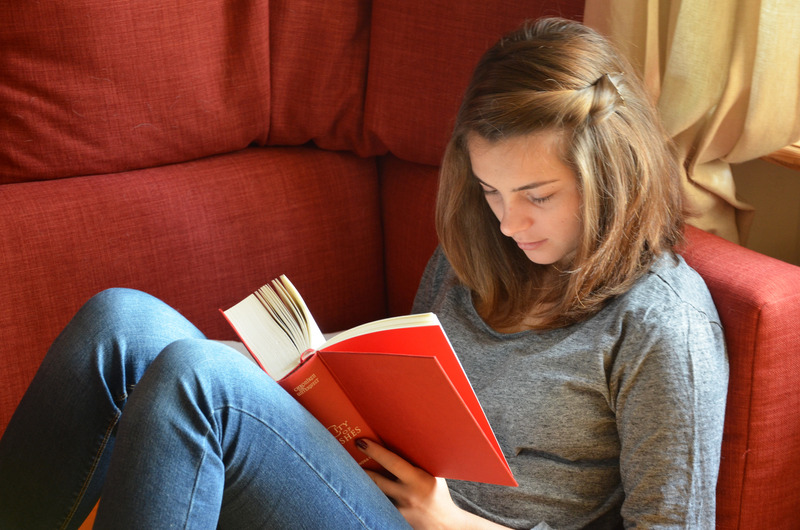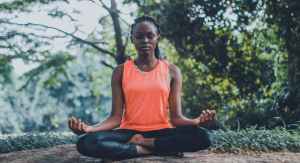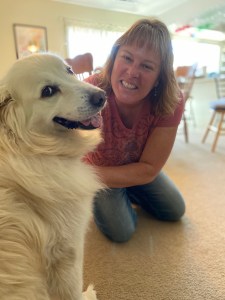Lucid Dreaming as a Portal to Afterlife Communication by Janet Piedilato, PhD (https://www.janetpiedilato.net/)

“The dream is a little hidden door in the innermost and most secret recesses of the soul.” C G Jung (Collected Works, 10, p 304)
Pere LaChaise lies east of central Paris, gathering place of such notables as Chopin, Champollion, Balzac, Oscar Wilde, Gertrude Stein, American’s Jim Morrison and over one million others. It is a place of life, not death. One emerges from the Metro at the stop which bears its famous name, Pere LaChaise, Father LaChaise, the eminent confessor to King Louis XIV, Pere LaChaise, communicator between the voice of the sun king and the eternal divinity. And so the journey begins, entering and coming down a long pathway ending with a monument, Aux Morts by Albert Bartolome. It is an imposing monument, a mastaba, a funerary monument prevalent in Ancient Egypt. It is how the Step Pyramid began its life, step by step added during the long years of birth, until it became the first pyramid. Yet the mastaba remains as foundation. And Aux Morts begins the journey for along its outer walls are the waking humans lamenting the passing of their loved ones as they await their entry through the False Portal that leads to no ordinary reality landscape but to the Everlasting, the Mansion of Millions of Years. Here begins our journey to communicate with those passed over, we walking upon the earth, lamenting the departure before us of our loved ones, yet coming to the doorway to commune with them…..How? With intention and with our ability to commune through the waking lucid dream, that is how.
For many a lucid dream is one where we are aware that we are dreaming, understanding during the dream that we are experiencing something beyond our waking reality environment. I expand the experience of the lucid dreaming to beyond the sleeping state proposing that we can be awake while fully attending internal imagery. Altering our focus away from the tangible proximal environment to the mental dreamscape allows us to experience a lucid waking dream while our critical observer is aware that we are physically situated in a particular location as our mind moves on the dreamscape. While only a few may be able to experience a lucid dream while sleeping, many can experience a lucid waking dream. With this widened perspective we will be able to view shamanic journeying, trance meditation, and invited waking dreams as lucid experiences where we expand consciousness in service of increased understanding of life and afterlife. We literally become walkers between the worlds, that of the physical tangible and that beyond waking limitations. We will come to see how the waking lucid dream acts as a doorway, a portal to an empowering inner experience opening to afterlife communion and a greater understanding of our true nature beyond the physical.
Introduction
“Tomorrow, at dawn, as the countryside whitens,
I shall leave. You’re waiting for me; I know.
…
I shall walk with my eyes closed in on my thoughts,
Seeing nothing beyond, hearing no sound,
Alone …
When I arrive, I shall place on your tomb
A posy of green holly and of heather in flower.”
Victor Hugo, Tomorrow at Dawn.
Victor Hugo said it well. Tomorrow at Dawn speaks of his journey to the tomb of his young daughter Leopoldine. He speaks of seeing nothing beyond his inner vision, hearing no sound from around him in waking as he focuses upon his meeting with her. The true portal thus recognized as inside oneself. The image of the Egyptian false door on tombs and temples that dot the landscape along the Nile reflect what is this deeply meaningful inner experience. The portal on Aux Morts likewise reflects the meeting place between the here and the hereafter. It is an experience open to each of us. And at this time when the veils are thin from Toussaints, All Saints, All Hallows, All Souls Day, to the flowing end of the year is the perfect time to make the intention and seek our communication.
Trance, meditation, and shamanic journeying have been with humanity beyond measured time and each practices the opening of inner communion. They are examples like lucid dreaming where individuals are awake, focusing inwardly upon mental imagery while remaining aware of the waking physical environment. A critical observer is thus in control of the experience, grounded in the physical proximal environment while we focus upon the dreamscape, gift of our imagination, the faculty by which we form mental images. We literally become walkers between both worlds, external and internal.
Communication with those in the beyond can begin simply in an ordinary sleep time dream or in waking we can call upon them, stand before the portal between waking and dream consciousness to call them forward. Sometimes the experience can be spontaneous as I relate the following unexpected experience.
I present a personal example of a meditation I encountered decades ago. Unexpectantly it took me to a deep afterlife communication. It began with a simple rosary. Kneeling on the floor with my rosary early one morning at 4 AM I had one of the big lucid dream moments. My rosary practice then and now consists of repeating a simple prayer, the Hail Mary, over and again as my fingers touch my beads. It was thus that one morning deep in the rosary praying that I suddenly found myself peering down from the ceiling of my room looking at my physical body kneeling on the floor below. A voice communicated with me from the Afterlife, one I recognized. I knew I was outside of time and space in that eternal space and I knew far more, understood more about my life than at any other moment. I understood that whatever challenge or sorrow befell me it would all always be all right, the message of this communication so strong it came upon me as something I already knew yet had somehow forgotten. It is difficult to articulate even now decades later the effect this had on me. The communion was real, undeniable. The message unquestionably genuine. It was unexpected and spontaneously generated. I was able to reach that communion again and I began to share my experience and the manner in which I reached it with others. Dawn, the liminal space between night and morning, the perfect time to rise and take the beads in hand to seek the lucid waking dream and communion with the Afterlife. The simple repetition of a prayer while the fingers engage with beads helps us to open the portal taking us beyond the boundaries of the physical. The waking lucid dream in that experience happened while I was completely awake attending to my rosary. While many might see my experience as an “out of body” experience I prefer to call it an “experience of expanded consciousness.” Looking upon this experience we can embrace the idea of walking between the worlds, lucid, aware while sleeping or fully awake.
More recently a series of lucid sleep dreams brought me what many might call remote viewing or out of body experiences (I call this expanded consciousness where my consciousness is still connected to my physical body while expanded far beyond its limitations. When my body dies then I can experience out of body, at least in my thinking) In any case I found myself in Pere LaChaise Cemetery in Paris. I had no prior waking knowledge of this place yet in the dream I was certain of my location. A communication came and I knew its sender who directed me to find that poem, At Dawn, something I likewise had no prior knowledge. I listened well. There was another prominent voice that rose to communicate with me, a composer, his music filling me. So strong were these communications that I booked my flight and followed the directive of the dreams. I was not disappointed.
I spent two days visiting in flesh what I first saw in lucid dream. It was surreal to be physically in Pere LaChaise, an experience which defied words. I yearn for more, something I hope to accomplish on future journeys.. And I rushed to two other places directed by the lucid dreams. One led me to Le Pantheon where upon the wall I found a memorial to one of my lifetime favorite authors, Antoine de Saint Exupery. And thus his words come forth
“That which is essential is invisible to the eyes”
Antoine de Saint Exupery. Le Petit Prince.

“Oh sleep that dreams and dream that never tires, Press from the petals of the lotus-flower something of this to keep, the essence of an hour!”~ F. Scott Fitzgerald
The other place I needed to visit was L’Eglise de Madeline. An exquisite church, it was the location of the funeral mass for Chopin, one who connected with me during the dreamings. I wished to sit in the Madeline and bring to mind Mozart’s Requiem which was played for his funeral. Before I left I purchased concert tickets which featured Chopin, hoping in this way to honor him. Yet upon arriving at the Madeline I found a poster announcing the memorial concert of Mozart’s Requiem in honor of Chopin’s funeral anniversary: October 30 1849- October 30 2022! I had no idea that my journey landed me at this important time. Immediately I purchased these new tickets and through an amazing turning ended up seated in the empty church, my two companions and myself, listening to over an hour of the orchestral rehearsal prior to listening to the entire memorial concert. All due to the lucid dreaming which led me across the waters to follow them, and to affirm my lifetime commitment to memory, to the state of our dismemberment, and our journey toward rememberment, joining waking and dream consciousness to be healed, made whole, gently freed of the overwhelming ignorance of our true nature. Communion with those passed over was so powerful, so meaningful in both the lucid dreaming and the synchronicities manifesting in waking. At Pere LaChaise we have the presence of the False door, the place of communion on the mastaba, like the many false doors in ancient Egypt, each pointing to the one inside ourselves.
The Egyptian False Door: Knocking on Heaven’s Gate

“Arise, O great reed float, like Wepwawet (Opener of the Ways), filled with your spiritual power (Aka) come forth from the Akhet (Afterlife).” The Pyramid Texts. Alexander Piankoff.
While we have no written information on our prehistoric human rituals of communicating with the Afterlife, we are blessed with the abundance of a strong Afterlife belief system in the Ancient Egyptian culture. The image above gives a view of one of the seven vaulted chapels in the Great Temple of Seti I in Abydos, Upper Egypt. Center on its west wall is the False Door. This is a door that does not open to a waking reality room but is intended to serve as a portal between the world of the living and that of the Afterlife. It was here at Abydos that priests would bring offerings and commune with the deities. It was here that the communication would flow between one living and one passed over. The living would remain aware of the physical chapel while focused upon the Afterlife communication, the waking lucid dream. Offerings were presented, physical or imaginal. The Ancient believed in the power of the word and thus they created what is called a Voice Offering. I present my abridged version here
An offering to Osiris, Lord of Djedu, great God, Lord of Abydos,
Of bread, beer, ox, fowl, alabaster, linen,
Everything good and pure on which a god lives
For the Ka of the revered one ( here the name of the deceased. ) ….
The False Door of Abydos is one of the many in the mortuary temple of Seti I, a pharaoh. Yet there are many False Doors in the mortuary chapels of nobles. A lovely example may be found in the False Door of the Mastaba of Perneb which can be visited in the Egyptian Collection of the Metropolitan Museum of Art in New York City. Likewise there is a vast collection of False Doors on display in the Egyptian Museum in Cairo with others in museums all over the world. They are simply a common feature pointing to the deep conviction of the ancient Egyptian people: The ability to communicate with those passed to the Afterlife.
I frequently visit Egypt as well as visiting the Mastaba Tomb which graces the Metropolitan Museum nearby. I often find myself standing before the ancient False Door reading the hieroglyphs above it. A scribe, now passed thousands of years ago addresses me in the script he left for my reading:
Oh ye who talk upon the earth, please stop and speak a voice offering in honor of Perneb…..
Composed and chiseled into the wall by a scribe over four thousand years ago I find myself responding, bridging the centuries as I speak the voice offering articulating the ancient prayer presenting the incorruptible, of all things good and pure for Perneb…… And I continue, seeing the False Door, as a place of communion, not only with the deceased for whom it was created, but as a portal of communion with my beloved passed away before me. The Door is behind glass presenting a division between where I stand and the opening to the Afterlife. It is a narrow room and few tourists spend more than a few moments inside. Alone, I shift my consciousness allowing the portal to open, allowing the images to rise on my mental landscape, allowing the communication to flow. The Ancient Egyptian False door is so symbolic of the portal beyond waking perception, a doorway to Communication with the Afterlife, all accessed via the lucid waking dream.
Awake and yet no longer solely attentive to physical environment each of us is capable of becoming walkers between the worlds, communicating with what is physically absent, eternally present in the Afterlife.

Nobles and workers who had the opportunity and the funds and time, created mortuary chapels and put aside additional funds for priests to conduct offering prayers for them at the False Doors within their chapels. The mortuary chapels and temples were seen as a place where the living continued to interact with the deceased. The prayers and offerings were presented to the Great Lord, the deity, in the name of the deceased as the living continued to commune with them. The False Door was not the sole place of Afterlife communication as it is suggested that in some households there were areas, rooms set aside as chapels in which mortuary stelae or ancestral busts of dead family or ancestors were kept as a place for convenient communication.
In summation:
The shift in consciousness, the altering of the focus from the sensory generated view of the external world to the imaginally generated dream reality ushers in the lucid waking dream state which offers one the opportunity to commune beyond the limitations of the physical world. The False door of Aux Morts at Pere LaChaise like the Ancient Egyptian False Door brings to mind the place of communion where one upon the earth can make offerings leading to a communication with the Afterlife. It is a powerful reminder of the empowering nature of our dreaming mind. We can expand our understanding of the False Door as a place, a portal within ourselves, where our conscious focus turns from the physical to view the imaginal world as we enter into the experience of Afterlife communication via a lucid waking dream. With one foot in each world we step beyond and open the possibility of Afterlife Communication.
Our beloved awaits our arrival… Meeting through our lucid dreaming….
I’d like to thank Dr. Janet Piedilato for contributing to the Conscious Chimera blog!
If you’d like to contact Dr. Piedilato, join her courses, purchase her dream tarot deck and book, or simply read her bio, you may do so here: https://www.janetpiedilato.net/





 deeper, something critical for long-term survival and prosperity. This lack is rooted in the spiritual (not to be confused with religious dogma). We have collectively lost our divine feminine soul.
deeper, something critical for long-term survival and prosperity. This lack is rooted in the spiritual (not to be confused with religious dogma). We have collectively lost our divine feminine soul. collaboration. Those qualities enliven feminine energy and when they are lived through the body and move the spirit, we touch the divine feminine.
collaboration. Those qualities enliven feminine energy and when they are lived through the body and move the spirit, we touch the divine feminine. me in a few directions. I had found myself drawn to meditate on the Goddess: Gaia, Brigid, Diana/Artemis, among others – this surfaced years ago. This year, I have returned to bring home an aspect of my Roman Catholic roots. That is turning my attention back to the Blessed Mother, Mother Mary, the Madonna. In addition to meditation and contemplation, I have opened myself to a kind of creativity that blends these ingredients by crafting small shrines in Her honor. As a longtime artist and craftsperson, I see how my consciousness shifts when I get into ‘the art zone.’ Time freezes, senses come alive, thoughts cease, and something bigger opens. This is just my current way of doing things and experiencing the mysteries of the process. I am no expert when it comes to the Divine Feminine. Like everyone else, I search for meaning.
me in a few directions. I had found myself drawn to meditate on the Goddess: Gaia, Brigid, Diana/Artemis, among others – this surfaced years ago. This year, I have returned to bring home an aspect of my Roman Catholic roots. That is turning my attention back to the Blessed Mother, Mother Mary, the Madonna. In addition to meditation and contemplation, I have opened myself to a kind of creativity that blends these ingredients by crafting small shrines in Her honor. As a longtime artist and craftsperson, I see how my consciousness shifts when I get into ‘the art zone.’ Time freezes, senses come alive, thoughts cease, and something bigger opens. This is just my current way of doing things and experiencing the mysteries of the process. I am no expert when it comes to the Divine Feminine. Like everyone else, I search for meaning. turned toward my Vitamix almost daily. I toss in organic broccoli, cauliflower, dark leafy greens, and berries. Once blended, I sip my vegetables while knowing that I have given myself a healthy phytonutrient blast. If I eat something that’s not so healthy later that day, I don’t feel so bad about it. Important side note: if you can afford organic fruits and vegetables, it’s worth it. I read a lot about food politics, but I won’t get into that here. Trust me, buying organic is worth your money!
turned toward my Vitamix almost daily. I toss in organic broccoli, cauliflower, dark leafy greens, and berries. Once blended, I sip my vegetables while knowing that I have given myself a healthy phytonutrient blast. If I eat something that’s not so healthy later that day, I don’t feel so bad about it. Important side note: if you can afford organic fruits and vegetables, it’s worth it. I read a lot about food politics, but I won’t get into that here. Trust me, buying organic is worth your money!



 be more in the present. I’ve also studied Theta Healing, a modality that uses the theta brain wave for intuitive healing. This modality works with animals to communicate in pictures. Yes, animals communicate in pictures and many understand words but they respond to energy and pictures immediately. Pets are simple, really. Most desire the walk you promised or a toy, or even a blanket they like to sleep on. Just like people they have personalities and motivations and dislikes. I have found that people also need to be worked on in order to help the animal’s situation and, when possible, I like to work with the whole family. I have a deep respect for animals and all life and feel a need to convey their wishes and desires. Often people want a dog or cat to behave a certain way and get upset when they don’t. It’s all about reading their body language because they are always reading yours.”
be more in the present. I’ve also studied Theta Healing, a modality that uses the theta brain wave for intuitive healing. This modality works with animals to communicate in pictures. Yes, animals communicate in pictures and many understand words but they respond to energy and pictures immediately. Pets are simple, really. Most desire the walk you promised or a toy, or even a blanket they like to sleep on. Just like people they have personalities and motivations and dislikes. I have found that people also need to be worked on in order to help the animal’s situation and, when possible, I like to work with the whole family. I have a deep respect for animals and all life and feel a need to convey their wishes and desires. Often people want a dog or cat to behave a certain way and get upset when they don’t. It’s all about reading their body language because they are always reading yours.”